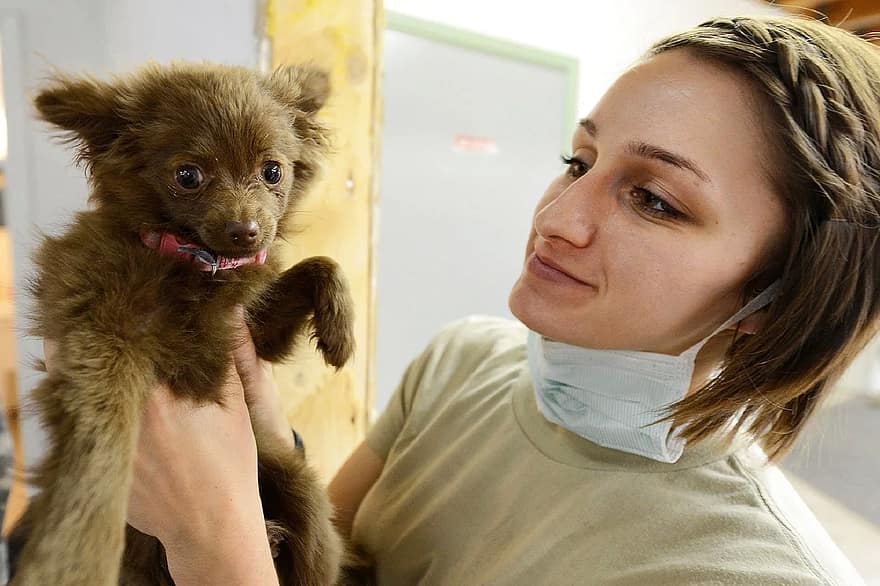
How to Know if Your Dog Is Healthy
Monitoring your dog’s health is important. By being attentive to certain signs, it is possible to treat or prevent diseases, intoxication, or infestations by parasites.
Dog’s health: the constants
All dogs, whatever their breed, from the largest to the smallest, have the same physiological data:
– average temperature: 38,5° C;
– heart rate: 70 to 120 beats/minute;
– respiratory rate: 15 to 30 movements/minute;
– the average age of puberty in males is 7 to 10 months;
– the average age of puberty in females is 6 to 12 months;
specific to the female:
– estrous cycle (cycle between two ovulation): 180 days;
– heats: 9 to 14 days;
– gestation: 63 days.
The dentition
As with humans, the dog’s teeth are made up of deciduous teeth that fall out to make room for permanent teeth. The deciduous dentition is composed of 28 teeth and is made up, per jaw, of 6 incisors, 2 fangs, and 6 premolars.
The dentition of the adult includes 42 teeth and the upper jaw comprises 6 incisors, 2 fangs, 8 premolars, and 4 molars while the lower jaw contains 6 incisors, 2 fangs, 8 premolars, and 6 molars.
Dog age

Age is another element that comes into play in understanding a dog’s health. Here are the key points to remember. It is often said that a dog’s age multiplied by 6 gives the human age equivalent. Thus, a 5-year-old dog would correspond to a 30-year-old human (6×5=30). This has to be qualified because, during the growth period, the ratio is about 15: a 1-year-old dog is already a big adolescent or a young adult. It corresponds to a human between 15 and 20 years old.
Aging curves
Among small breeds, a 10-year-old dog can be compared to a 60-year-old human.
For a large breed dog (German Shepherd, Great Dane…), the ratio is 10: a 10-year-old dog is equivalent to a human centenarian because aging is faster in these dogs.
The average life expectancy of a dog is inversely proportional to its size: close to 15 years for a poodle, it is only about 8 years for a Great Dane.
The senses
The senses of the dog are significantly different from those of humans:
If dogs have a sight, a hearing, and a sense of smell more developed than humans, on the other hand:
They do not perceive the same number of colors.
They have a much less developed sense of taste.
The dog’s sense of touch is not comparable to that of humans, since it is only exercised through the skin, the pads, and the nose. This gives him information about the environment, but cannot compare to the human sense of touch.
Read more: How Do Dogs Communicate With Us?
Comparison of the senses of dogs and humans
|
Senses |
Dog |
Human |
|---|---|---|
|
Vision |
290° |
180° |
|
Colors |
2 colors (green, and blue) |
3 colors (green, blue, and red) |
|
Hearing |
||
|
Ultrasound up to |
45 kHz |
20 kHz |
|
Minimum level |
5 dB |
20 dB |
|
Smell |
||
|
Olfactory cells |
200 million |
500 000 |
|
The surface of the olfactory mucosa |
80-200 cm2 |
3 cm2 |
|
Number of distinguished odors |
500 000 |
10 000 |
|
% of the brain dedicated to smell |
10 |
0,3 |
|
Taste |
||
|
Number of taste buds |
700 |
9 000 |
|
Distinguished flavors |
4: sweet, salty, bitter, sour |
5: sweet, salty, bitter, acid, unami (glutamate) |
Read more:
– Why Do Dogs Mark Their Territory;
– All You Need to Know Before Bringing a Dog Home;
– How Do You Bathe Your Lovely Dog;
– How to Choose Your Dog’s Food;





